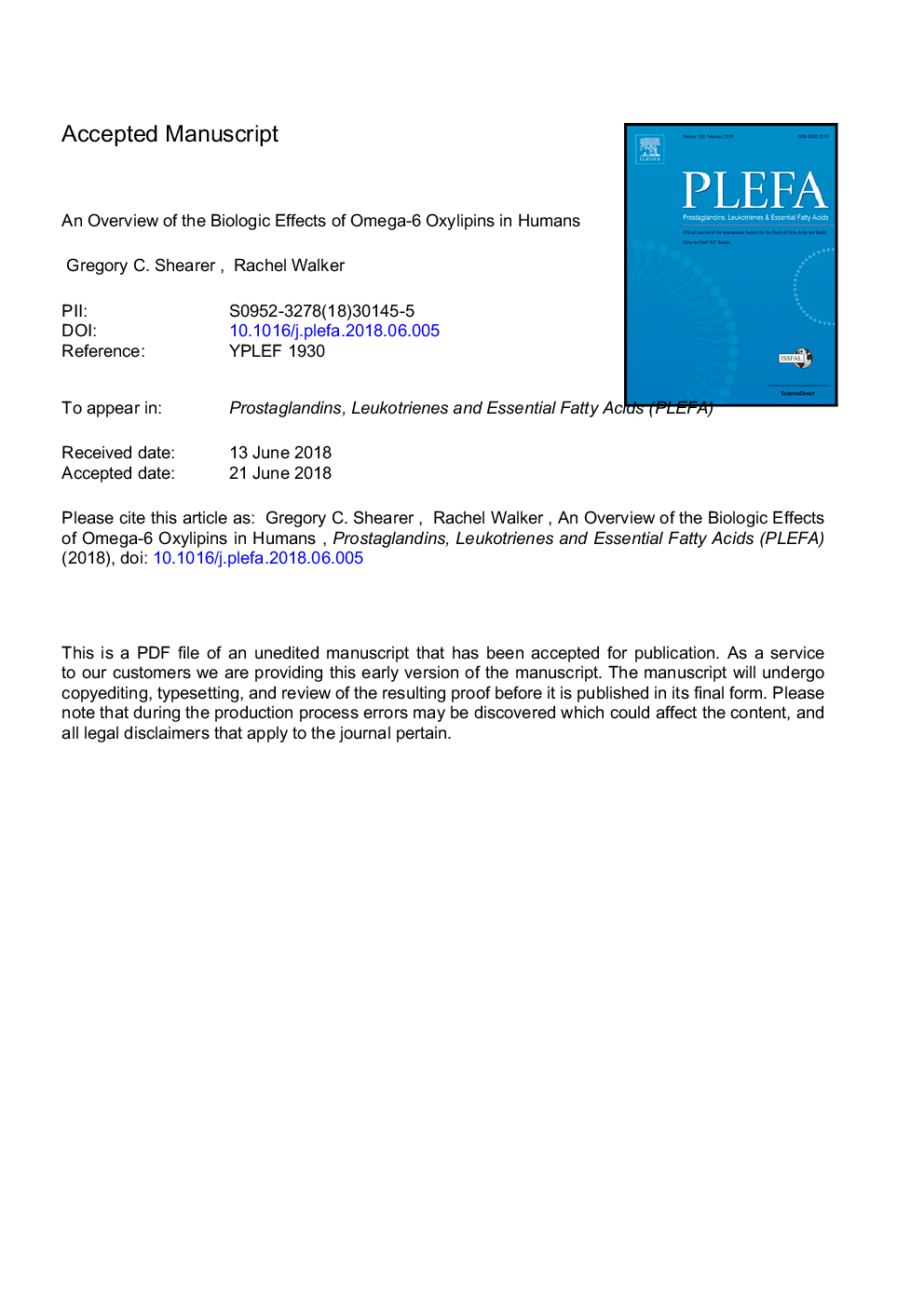| Article ID | Journal | Published Year | Pages | File Type |
|---|---|---|---|---|
| 8624488 | Prostaglandins, Leukotrienes and Essential Fatty Acids (PLEFA) | 2018 | 41 Pages |
Abstract
Oxylipins are lipid mediators produced from polyunsaturated fatty acid (PUFA) metabolism, and are thought to be a molecular explanation for the diverse biological effects of PUFAs. Like PUFAs, oxylipins are distinguished by their omega-6 (n6) or omega-3 (n3) chemistry. We review the use of n6 oxylipins as biomarkers of disease and their use in diagnosis and risk assessment. We show cases where oxylipins derived from linoleate (LA) or arachidonate (AA) produced by the activities of lipoxygenase, cyclooxygenase, epoxygenase, Ï/Ï-1 hydroxylase, and autooxidation are useful as biomarkers or risk markers. HODEs, KODEs, EpOMEs, DiHOMEs, and other metabolites of LA as well as prostanoids, HETEs, KETEs, EpETrEs, and DiHETrEs, and other metabolites of AA were useful for understanding the different signaling environments in conditions from traumatic brain injury, to major coronary events, dyslipidemia, sepsis, and more. We next evaluate interventions that alter the concentrations of n6 oxylipins in plasma. We note the utility and response of each plasma fraction, and the generally increasing utility from the non-esterified, to the esterified, to the lipoprotein fractions. Finally, we review the effects which are specifically related to n6 oxylipins and most likely to be beneficial. Both n6 and n3 oxylipins work together in an exceedingly complex matrix to produce physiological effects. This overview should provide future investigators with important perspectives for the emerging utility of n6 oxylipins as products of n6 PUFAs in human health.
Related Topics
Life Sciences
Biochemistry, Genetics and Molecular Biology
Clinical Biochemistry
Authors
Gregory C. Shearer, Rachel E. Walker,
